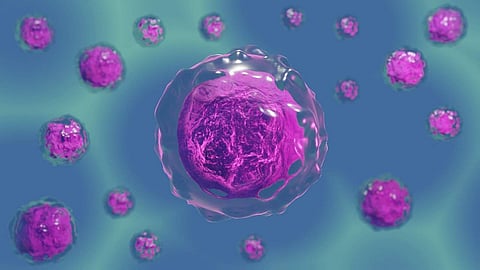
- News
- Campus
- Exam
- Podcast
- Web Stories
- Do You Know
- Path Finders - UG Programs
- Videos
- Book Review

Cells sense and respond to the mechanical properties of the cellular microenvironment in the body. Changes in these properties, which occur in a number of human pathologies, including cancer, can elicit abnormal responses from cells but how the cells adapt to such changes in the mechanical microenvironment is not well understood.
A team of researchers at Texas A and M University are working to understand cellular mechanosensing- the ability to sense and respond to the mechanical properties of the microenvironment- in a unique way. Dr Tanmay Lele, Unocal Professor in the Department of Biomedical Engineering, Department of Chemical Engineering and the Department of Translational Medical Sciences, partnered with Dr Charles Baer, an evolutionary biologist at the University of Florida. Together they used methods of experimental cellular evolution as a means to understand cellular adaptation to biomaterials of controlled mechanical properties.
The experiments were led by doctoral student Purboja Purkayastha from the Artie McFerrin Department of Chemical Engineering and technical laboratory coordinator Kavya Pendyala from the Department of Biomedical Engineering at Texas A and M. "Before our work, it was basically unknown if cells would evolve in controlled mechanical environments. We set out to test this possibility," Lele said.
Cells are products from hundreds of millions of years of evolution, and their response to environments- whether chemical or mechanical- has likely evolved through a process of natural selection. Chemical constraints are well known to exert selection pressure on cell populations, but whether the mechanical properties of a cell's environment constitutes a significant agent of natural selection has never been investigated before.
Many types of animal cells exhibit 'phenotypic plasticity'. They look and function differently- in different mechanical environments. There are two possible explanations for the plasticity of cells in different mechanical environments. First, the phenotypes may be optimal, such that there is no better way for a cell to function in each environment.
Alternatively, the plasticity may be a compromise such that the phenotypic trait is optimal for a given mechanical context but suboptimal in other mechanical contexts. The team's research demonstrated that cellular mechanosensing is, in fact, not optimal but a tradeoff. Using a combination of experimental cellular evolution on biomaterials of controlled stiffness, genome sequencing, simulations and gene expression analysis, the team showed that cells evolve under selection pressure from biomaterials of controlled mechanical stiffness.
The team's research was recently published in the journal Molecular Biology and Evolution. Lele said that experimental cell evolution is a good approach to better understand the mechanisms underlying cellular mechanosensing. "We are currently using experimental cellular evolution to understand how cancer cells, which have great genomic variation, respond to the altered mechanical stiffness and other mechanical properties of tumour microenvironments," Lele said. Lele continued, "Further, the fact that cells can be evolved on biomaterials of controlled properties in vitro opens up new ways to generate engineered cells with properties optimal for those properties."
